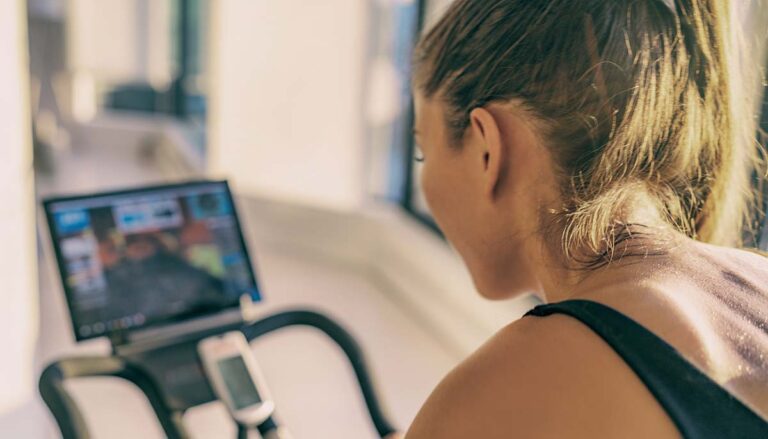Several studies have indicated that exercising and virtual reality (VR) is actually better for you than doing so in the real world, as the technology helps you work out longer, feel less pain, and eat less afterward, experts claim.
Should you ditch the gym for virtual reality?
Getting outside or motivating yourself to go to the gym – especially after the holidays and during the winter season – can be difficult. Now researchers say you might be better off working out in virtual reality (VR) instead.
According to researchers who have conducted several studies on virtual reality workouts, experts have concluded that exercising in VR is better for you than doing so in the real world.
Researchers claim that VR technology actually helps people exercise for a longer period of time, feel less pain while doing so, and reduces the desire to binge eat after a workout.
Simulated reality
VR, which stands for virtual reality, is achieved by wearing a VR headset and computer technology, typically used in gaming and simulation environments. Virtual reality makes a person feel they are in a simulated reality through the use of three-dimensional visuals and sounds that work to create a realistic environment by stimulating the senses to create the illusion of reality.
VR headsets are made by a variety of companies, such as Oculus Quest and HTC Vive. One typical way VR headsets are used is wearing them while pedaling an exercise bike and watching a screen that simulates cycling down a paved path on a summer day. Meta Quest 2 starts at $399, while Vive Flow starts at $499.
The main benefits of VR exercise
Throughout a range of scientific studies, experts have found that the use of a VR headset provides the following benefits: Helps you work out longer, increases heart rate, reduces desire to eat, reduces pain during exercise, provides both a mental and physical workout.
VR helps get over psychological hurdles of exercise
One of the researchers leading one of the studies is Dr. David Neumann, from Griffith University in Australia. He says virtual reality workouts have a psychological benefit during exercise by “drawing attention away from the body and toward the virtual environment.”
“Unless time is spent thinking about fatigue and soreness in the muscles,” Dr. David Neumann told the Daily Mail. “The novelty of the environment or its realism can serve to distract people away from what can make exercise unpleasant.”
The results from various studies
Work out longer: In one study published in 2020 in the Journal of Human Sport and Exercise and conducted by researchers at the State University of New York at Oswego, 29 university students rode an exercise bike for six minutes at a brisk pace. Then they repeated the ride wearing a VR headset. The students had a higher heart rate, burning more calories during the VR ride. Over half the students said they found it easier to focus while wearing the VR headset, and 62% said they felt like they could work out longer.
Decreased pain and fatigue: A 2018 study published in the journal Psychology Sports and Exercise showed a group performing bicep curls at 20 percent of their maximum weight who watched a VR representation of an arm and the weight reported a 10 percent lower pain intensity and had a longer time to exhaustion than the non-VR group.
Another study by scientists at the Beth Israel Deaconess Medical Center in Massachusetts found surgery patients required less anesthetic when experiencing VR.
Eat less afterward: An August 2022 study found participants had a decreased desire and ate less food after a workout performed wearing a VR headset.





